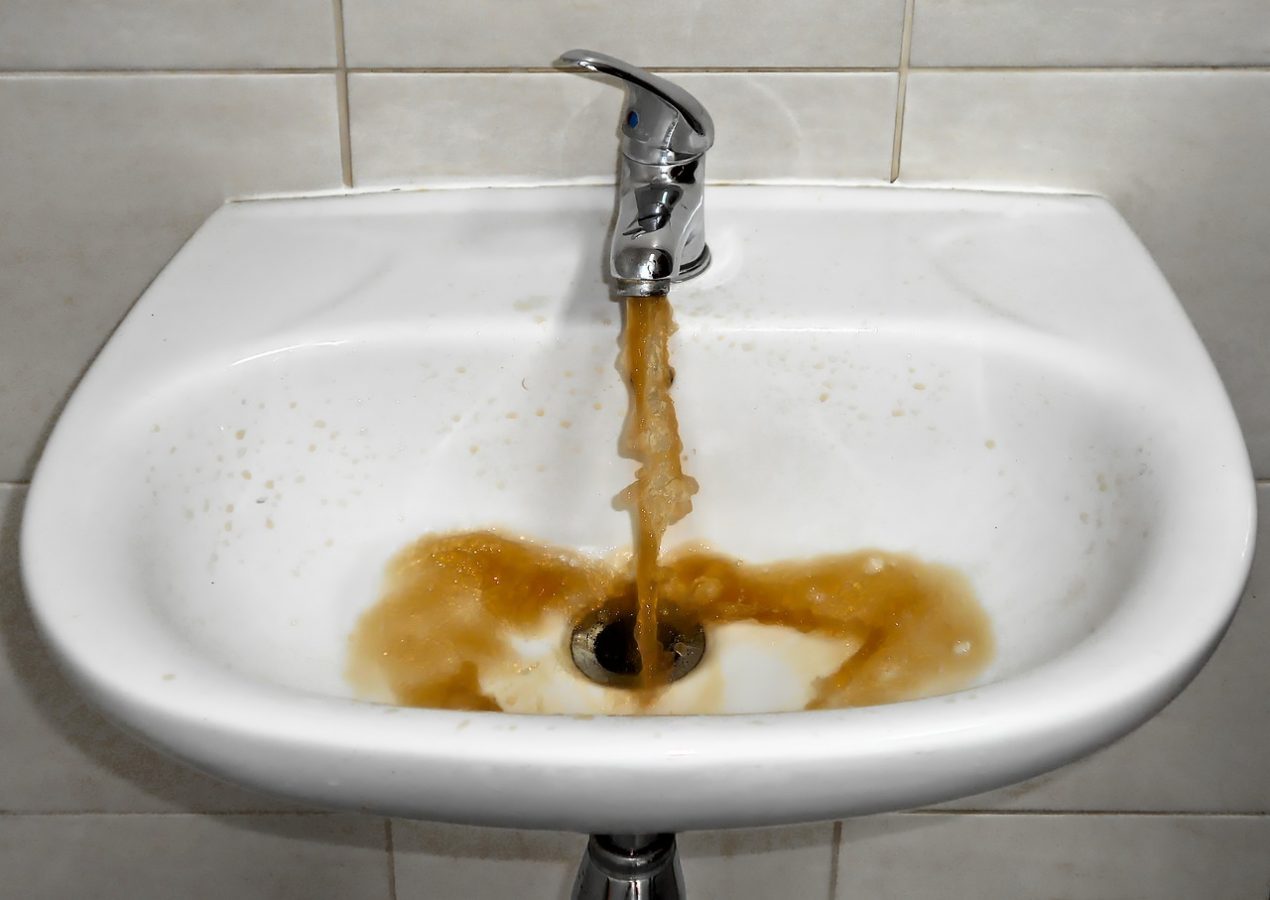
26 Jan What to Do When Your Water Is Discolored?
Following the major crisis in Flint, Michigan and several other water contamination incidents countrywide, Americans are now watching their tap water more closely than ever.
In case your tap water has turned cloudy, murky, brown, or your water is discolored in any way, learn what caused it – and what you should do about it:
What causes water discoloration?
Naturally occurring minerals (primarily manganese and Iron) flowing with the water are usually to blame for water discoloration. These minerals, which are heavier than water, settle in water pipelines when water usage is low — especially in the winter.
When the water pressure and flow through the water pipes increases again (due to construction, irrigation, etc.), the minerals are stirred up and flow out of your faucets when you turn on the tap.
Let’s have a look at some of the reasons why the water gets discolored:
New Water Source Causing Discoloration
A fresh or a brand-new water source, such as a river or a reservoir, is among the most common causes of changes in water quality. The switch could provide the water with mixed qualities or disrupt the way it flows, both of which can affect the look, odor, taste, or healthfulness of your water.
Organic Material
Dirt and several other naturally occurring sediments settle at the bottom of water supply lines. If anything causes the water passing through the pipes to speed up – such as a high service demand, firefighting, or a water main break – the faster flow can stir up the sediment and cause the water to appear brown or yellow.
Pipe Material Discoloring Tap Water
When lead pipes and cast iron corrode over time, rust and other pipe materials flake off into the water. Manganese and iron produce an orange-to-brown color, while lead might turn the water darker and include tiny particles. Rubber plumbing materials, such as O-rings or gaskets, could break down into visible black particles in water. As with organic material, more pipe materials dislodge when water flows more rapidly via service lines.
Air
Extra air moving through or trapped in water could give it a cloudy or a milky white appearance.
Upstream pollution
Rainwater can wash chemicals – such as motor oil on highways, residue from fracking operations, or pesticides in agricultural communities – into the groundwater or surface water that feeds your tap.
Is the water safe to drink if it is discolored?
As long as the discoloration is due to minerals such as manganese and iron, it remains safe to drink. It does look bad, but it is perfectly drinkable. There is also a possibility that the discoloration is symptomatic of another issue; however. For peace of mind contact our plumbing inspection experts to diagnose the real problem.
What you should do:
If discoloration occurs, run the COLD water at one faucet for about 5 minutes, and you should see the water clear. (Running the hot water pulls from the water heater, which could make the problem worse.) If the water fails to clear after 5 minutes, wait for a few hours and again try running only the cold water.
If the water is still discolored, get in touch with our certified and fully trained plumbers at 535 Plumbing and let them inspect and provide a professional diagnosis.


